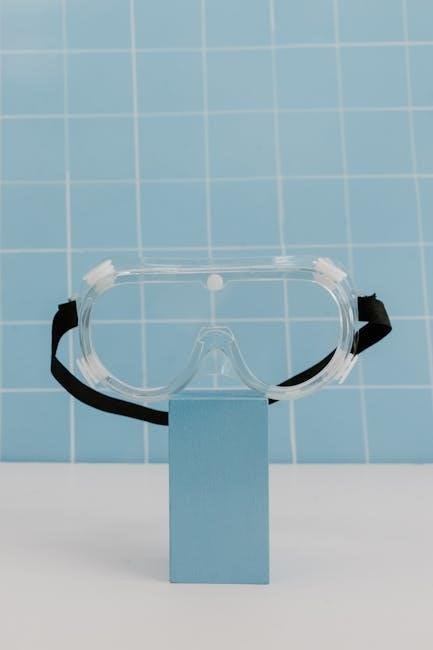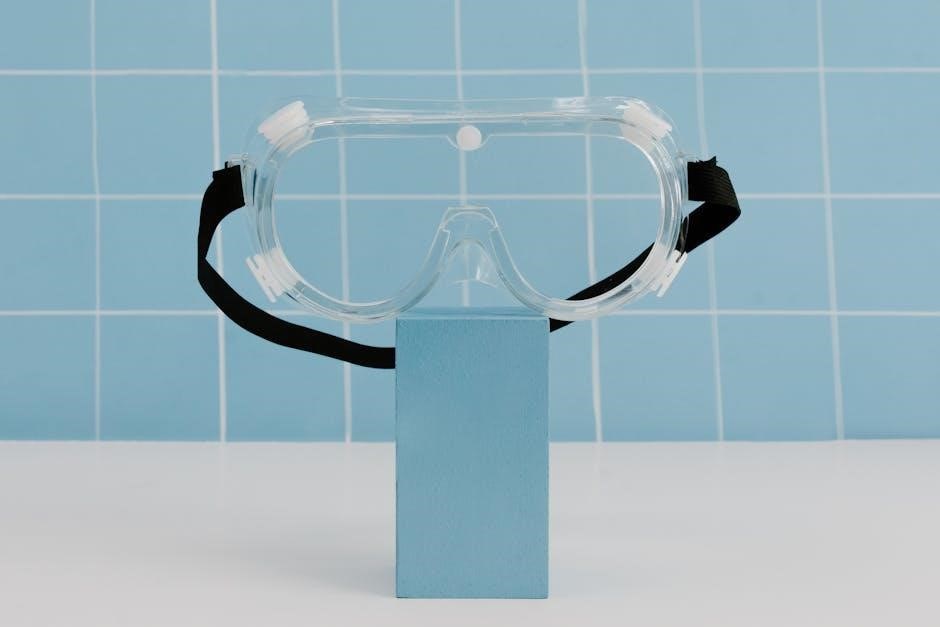Syringes and needles are essential medical devices for administering drugs and vaccines. They consist of a plunger and needle, designed for precise delivery. Available in various types, they ensure safe and effective injections, catering to different medical needs and applications.
Overview of Syringes and Needles
Syringes and needles are critical medical tools used for injecting or withdrawing fluids. A syringe consists of a cylindrical barrel, a plunger, and a needle or nozzle. Needles vary in gauge, length, and type, such as fixed, removable, or bevel-tipped. Syringes are used for administering medications, vaccines, or withdrawing blood. They come in different sizes and types, including insulin, tuberculin, and pre-filled syringes. Needles are categorized by their point styles, like cutting or bevel-type, and are designed for specific applications. Safety standards, such as ISO 7886, ensure syringes meet precise specifications for medical use. Proper selection and care are essential to prevent contamination and ensure accurate delivery of substances.
Importance of Syringe and Needle Safety
Syringe and needle safety is paramount to prevent infections, injuries, and accidental exposure to harmful substances. Proper handling ensures compliance with safety standards, such as ISO 7886, which outlines specifications for sterile, single-use syringes. Features like auto-disable mechanisms and built-in shields minimize risks of needlestick injuries. Safe disposal after use is critical to avoid contamination and viral transmission. Regular inspection for damage, such as cracks or burrs, ensures equipment reliability. Training on correct techniques and adherence to maintenance guidelines further enhances safety. Strict protocols for syringe and needle use are vital in healthcare settings to protect both patients and medical professionals from potential hazards.

Types of Syringes
- Insulin syringes for diabetes management.
- Tuberculin syringes for diagnostic purposes.
- Pre-filled syringes for convenience.
- Disposable syringes for single-use safety.
- Auto-disable syringes to prevent reuse.
Insulin Syringes
Insulin syringes are specifically designed for the administration of insulin, a hormone used to treat diabetes mellitus. These syringes are calibrated in insulin units rather than milliliters, ensuring precise dosing. They typically feature smaller needle gauges and shorter lengths to facilitate subcutaneous injections. Insulin syringes are available in various sizes, such as 1ml, 0.5ml, or 0.3ml, to accommodate different insulin regimens. They are designed for single-use and are often marked with clear graduations to help patients measure their doses accurately. Proper storage and handling of insulin syringes are crucial to maintain insulin potency and ensure safe administration. They play a vital role in diabetes management, enabling patients to self-administer insulin effectively.
Tuberculin Syringes
Tuberculin syringes are specialized syringes used primarily for administering tuberculin skin tests, which help diagnose tuberculosis. These syringes are designed for precise, shallow injections, typically into the intradermal layer. They are calibrated in tenths of a milliliter, allowing for accurate measurement of small volumes. Tuberculin syringes often feature a short, fine needle to minimize discomfort during the injection. They are single-use devices, ensuring sterility and preventing cross-contamination. Proper technique is essential when using tuberculin syringes to obtain reliable test results. Their design and functionality make them an indispensable tool in public health and clinical settings for tuberculosis screening and diagnosis. Regular training is recommended for healthcare professionals to maintain proficiency in their use.
Pre-filled Syringes
Pre-filled syringes are convenient, ready-to-use devices containing a predetermined dose of medication. They are widely used for vaccines, biologics, and other therapies requiring precise dosing. These syringes eliminate the need for manual filling, reducing preparation time and minimizing dosing errors. Many pre-filled syringes feature fixed needles, while others allow for detachable needle options. Their design ensures sterility and safety, with some models incorporating safety shields to prevent accidental needlestick injuries. Pre-filled syringes are popular in clinical settings due to their ease of use and reliability. They are also patient-friendly, making them ideal for self-administration in certain cases. This innovation enhances medication adherence and streamlines healthcare delivery.
Disposable Syringes
Disposable syringes are single-use devices designed for safety and hygiene. They are made from durable, medical-grade plastics and are pre-sterilized to prevent contamination. These syringes are available with fixed or removable needles, offering flexibility for various medical procedures. Their lightweight and compact design makes them portable and easy to use. Disposable syringes are widely used in hospitals, clinics, and home care settings, reducing the risk of cross-infection and needlestick injuries. They are cost-effective and eliminate the need for sterilization after use. With different sizes and gauges, disposable syringes cater to diverse applications, from insulin administration to blood collection. Their convenience and safety features make them a preferred choice in modern healthcare. Proper disposal is essential to prevent environmental contamination and ensure public safety.
Auto-disable Syringes
Auto-disable syringes are designed to prevent reuse, enhancing safety and reducing the risk of infections. These syringes incorporate a mechanism that locks the plunger or breaks the needle after a single use. They are particularly useful in immunization programs and settings where syringe reuse is a concern. Auto-disable syringes are compliant with ISO 7886 standards for fixed-dose immunization, ensuring reliability and effectiveness. They are ideal for mass vaccination campaigns due to their simplicity and safety features. By preventing accidental needlestick injuries and ensuring that each injection uses a sterile device, auto-disable syringes play a critical role in maintaining public health and safety. Their innovative design makes them a preferred choice for healthcare professionals worldwide. Proper disposal is still required to maintain environmental safety.

Types of Needles
Needles vary in type, including fixed, removable, cutting, and bevel, each designed for specific medical applications, ensuring precise delivery and minimizing discomfort during injections and procedures.
Fixed Needles
Fixed needles are permanently attached to syringes, offering a secure connection for precise injections. They are commonly used in applications requiring consistent performance, such as in autosamplers or repetitive medical procedures. These needles are known for their durability and reproducibility, making them ideal for high-precision tasks. Fixed needles are often favored in laboratory settings where accuracy and consistency are crucial. They come in various gauges and lengths to suit different applications, ensuring versatility while maintaining reliability. This design minimizes the risk of needle dislodgment during use, enhancing safety and efficiency in both clinical and research environments.
Removable Needles
Removable needles are designed to be detached from the syringe after use, offering flexibility in medical and laboratory applications. They are often used in scenarios where different needle types or sizes are required for various patients or procedures. This design allows for cost-effective use, as the syringe barrel can be reused with multiple needles. Removable needles are commonly employed in clinical settings for injections, blood collection, or anesthesia. They minimize the risk of needle exposure and reduce waste, making them a practical choice for healthcare professionals. Available in various gauges and lengths, removable needles provide versatility while maintaining safety and efficiency in diverse medical situations.
Cutting Needles
Cutting needles are designed with a sharp, cutting-edge point, typically used in surgical or dental procedures requiring precise tissue penetration. They come in various shapes, such as reverse cutting or micro-point styles, to suit specific applications. These needles are often used for local anesthesia injections or minor surgical interventions. Their durability and sharpness ensure effective performance, reducing discomfort during procedures. Cutting needles are available in different gauges and lengths, making them versatile for various medical needs. Safety features, such as protective shields, are often integrated to prevent accidental pricks. Proper handling and sterilization are crucial to maintain their effectiveness and safety in clinical settings.
Bevel Type Needles
Bevel type needles feature a specialized angled cut at the tip, designed to enhance penetration and minimize discomfort during injections. The bevel orientation is crucial, as it helps guide the needle into tissue effectively. These needles are commonly used for venipuncture, intramuscular injections, and subcutaneous procedures. The bevel design reduces resistance, allowing for smoother entry and better control. Bevel type needles are available in various gauges and lengths, catering to different medical applications. They are widely used in both clinical and laboratory settings due to their precision and versatility. Proper selection of bevel type needles ensures optimal performance and patient comfort in diverse medical procedures.

Syringe and Needle Combinations
Syringe and needle combinations offer tailored solutions for specific medical needs. They include:
- Syringes with Detached Needles: Allow interchangeability of needle types and sizes for diverse procedures.
- Syringes with Built-in Shields: Feature safety mechanisms to prevent accidental needlestick injuries, ensuring compliance with safety standards.
Syringes with Detached Needles
Syringes with detached needles provide enhanced versatility in medical procedures. These syringes allow the needle to be removed and replaced, enabling the use of different needle sizes and types for specific applications. This feature is particularly useful in situations where multiple injections or varying needle gauges are required. Detached needles also facilitate easier maintenance and storage, as the needle can be safely disposed of after use. This design is widely used in clinical settings, offering flexibility and reducing the risk of cross-contamination. Additionally, it allows healthcare professionals to tailor the syringe setup to individual patient needs, ensuring precise and effective delivery of medications or vaccines.
Syringes with Built-in Shields
Syringes with built-in shields are designed to enhance safety by reducing the risk of needlestick injuries. These shields automatically cover the needle after injection, protecting healthcare workers from accidental exposure. This feature is particularly crucial in high-risk environments where handling sharp medical instruments is common. The built-in mechanism ensures that the needle is securely concealed, minimizing the potential for injury and infection transmission. This innovative design not only improves workplace safety but also aligns with international safety standards for medical devices. By incorporating shields into the syringe, manufacturers aim to provide a reliable solution for safer injections, benefiting both patients and medical professionals.

Safety Features and Standards
Safety features in syringes and needles include auto-disable mechanisms and built-in shields to prevent needlestick injuries. ISO 7886 standards ensure quality, safety, and performance for single-use syringes.
ISO 7886 Standards for Syringes
ISO 7886 establishes international standards for sterile, single-use hypodermic syringes, ensuring safety and reliability. It covers dimensions, materials, and performance requirements, including tests for sterility and functionality. The standard addresses syringe barrels, plunger movement, and needle attachments, ensuring compatibility and consistency across manufacturers. Compliance with ISO 7886 guarantees that syringes meet rigorous quality benchmarks, minimizing risks during medical procedures. This standard is particularly relevant for auto-disable syringes used in immunization programs, ensuring they deliver fixed doses safely and prevent reuse. Adherence to these standards is crucial for maintaining patient safety and public health globally.
Safety Features in Modern Syringes
Modern syringes incorporate advanced safety features to prevent needlestick injuries and ensure safe injections. Built-in shields automatically cover the needle after use, reducing accidental pricks. Auto-disable mechanisms prevent syringe reactivation, making them unusable after one dose. These features minimize risks of infection and bloodborne pathogen transmission. Safety syringes often include tamper-evident packaging and secure needle attachments to enhance reliability. ISO standards guide the design and functionality of these safety mechanisms, ensuring compliance with global health regulations. These innovations protect healthcare workers and patients, promoting safer medical practices worldwide while maintaining ease of use and effectiveness in drug delivery.
Maintenance and Care
Proper syringe and needle care involves regular inspection for damage, storing in protective cases, and cleaning with sterile solutions. Dispose of used items in designated containers to prevent reuse and infection risks.
Step-by-Step Syringe Inspection
Inspecting a syringe involves checking for cracks, chips, or damage to the barrel and plunger. Ensure the plunger moves smoothly without resistance. Examine the needle for burrs, bends, or corrosion. Verify the packaging for sterility and expiration dates. Look for any signs of tampering or wear. Check the calibration markings for clarity and accuracy. Ensure the needle cap is securely attached and undamaged. Inspect the syringe for any residue or contamination. Proper inspection ensures safe and effective use, preventing potential errors during administration. Regular inspection also extends the lifespan of the syringe and maintains its reliability in medical procedures.
Proper Needle Selection and Care
Proper needle selection involves choosing the right gauge, length, and type for the specific medical procedure. Always inspect needles for damage, burrs, or corrosion before use. Use sterile needles to prevent infections and ensure compatibility with the syringe. Handle needles with care, avoiding unnecessary touching or bending. After use, securely recap needles to prevent accidental pricks. Store needles in a protective container and dispose of them safely in a sharps container. Regularly maintain and clean reusable needles, following manufacturer guidelines. Proper care extends the lifespan of needles and ensures safe, effective use in medical settings. Always follow safety protocols to minimize risks.
